Top Ten Foods that are Healthy and Rich in Probiotics
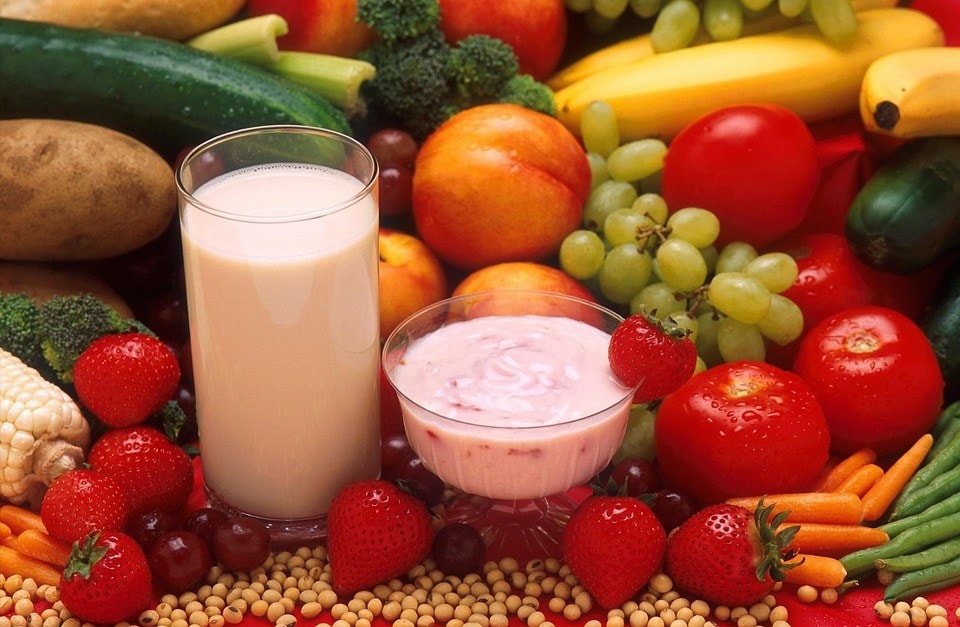
Probiotics are live microorganisms that are similar to the bacteria which is present in our gastrointestinal tract and in our foods. The lower digestive tract teams with a diverse community of bacteria in our body. As a matter of fact, there are more bacteria than cells in our body.
However, not all bacteria are good. There are also bad bacteria that can cause illnesses whenever the good bacteria is out of balance. This can cause weight issues, stomach problems, skin conditions, and other chronic health diseases.
Probiotics have been popular nowadays because it can give many health benefits. It can regulate blood pressure, help one lose weight, solve baby colic, prevent skin diseases, and others. Probiotics are available as a supplement and it is also available in our foods.
In this article, we’ll learn what are some of the foods that are rich in probiotics:
Top 10 Foods Rich in Probiotics:
Yogurt
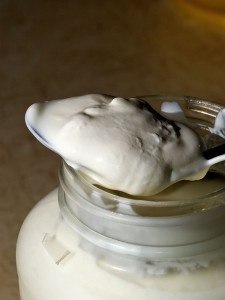 The first in the list of foods rich in probiotics is the yogurt. Bacterial fermentation or culture of milk such as the Lactobacillus delbrueckii subsp bulgaricus and Streptococcus thermophilus can produce yogurt. In addition, during the fermentation of the lactose, it can also produce lactic acid. This acid can give texture to the yogurt and also a tart flavor.
The first in the list of foods rich in probiotics is the yogurt. Bacterial fermentation or culture of milk such as the Lactobacillus delbrueckii subsp bulgaricus and Streptococcus thermophilus can produce yogurt. In addition, during the fermentation of the lactose, it can also produce lactic acid. This acid can give texture to the yogurt and also a tart flavor.
Yogurt is usually milk from the cow and it is available worldwide. In some cases, manufacturers also use homogenized or pasteurized milk from goats, yaks, camels, buffalo, and others to produce yogurt.
After culturing, yogurt companies add Bifidobacteria and lactobacilli at the yogurt. In some countries, there are stricter standards in the number of bacteria in the yogurt before you sold it at the market. For example in China, the required number of lactobacillus is at least 1 × 106 CFU per milliliter.
To make a yogurt, heat the milk to 85 degrees Celsius or 185 Fahrenheit degrees. Then, put aside the milk to cool to 45 degrees Celsius or 113 degrees Fahrenheit. Mix the good bacteria in the yogurt and store it for about 4 to 12 hours to ferment.
History of Yogurt
The word yogurt comes from the Turkish language which means thick or dense. Historians agree that yogurt was accidentally discovered during ancient times when people store milk using primitive ways in the places with a warmer climate.
During the Neolithic period in Central Asia, herdsman began milking their animals and the enzymes in the milk begin to form inside the container. This is the beginning of yogurt and they continue fermenting milk because it tastes good and it can stay longer.
 The practice is the start of commercial yogurt making, according to historians. There are also some theories that Genghis Khan of the Mongol Empire drinks yogurt to live, according to Dairy Goodness. The popularity of yogurt spread throughout the world. The Turkish immigrants took it to North America in the 1700s and in 1919, Isaac Carasso produced the yogurt at Barcelona, Spain.The company was named as ‘Danone’ which is attributed to his son ‘Little Daniel’.
The practice is the start of commercial yogurt making, according to historians. There are also some theories that Genghis Khan of the Mongol Empire drinks yogurt to live, according to Dairy Goodness. The popularity of yogurt spread throughout the world. The Turkish immigrants took it to North America in the 1700s and in 1919, Isaac Carasso produced the yogurt at Barcelona, Spain.The company was named as ‘Danone’ which is attributed to his son ‘Little Daniel’.
In the 1950s and in the 1960s, the popularity of yogurt boomed due to many people are becoming health conscious. Today, yogurt is available in different flavors and sizes to suit each user’s needs.
Nutritional facts of yogurt
Yogurt is a rich source of protein, according to Authority Nutrition. In 100 grams of whole milk plain yogurt, the protein content is about 3.5 grams. Meanwhile, in 100 grams of yogurt, the calories are 61, water is 88%, carbs is 4.7 grams, sugar is 4.7 grams, and the fat is 3.3 grams. If the yogurt is nonfat, it can include about 0.4% of fat.
The majority of fat content in yogurt is saturated which is 70% but it also includes 0.89 grams of monounsaturated fat, according to Authority Nutrition.
Full fat yogurt contains vitamins and minerals that our body needs. It includes Vitamin B12, Calcium, Phosphorus, and Riboflavin.
Types of Yogurt
According to Dairy Goodness, there are three main types of yogurt. It is the Balkan-style, Greek-style, and the Swiss-style.
The Balkan-style yogurt is a milk mixture that is warm. It has a thick texture and one can incubate it without stirring. Unlike other types of yogurt, the Balkan-style can be plain and many people love it.
Meanwhile, the Swiss-style yogurt is thinner than the Balkan-style. It is a yogurt that is cooled, incubated, and stirred in a large container. Oftentimes, manufacturer combines it with other fruit for additional flavor. One can mix the Swiss-style yogurt on any desserts or eat it as-is.
Lastly, the Greek-style yogurt is made from either straining whey from yogurt or removing water in milk to make it creamier and thicker. This type of yogurt is perfect for cooking because it can hold up better than other types of yogurt. Many people also call this as Mediterranean style yogurt and they use it for dips.
Kimchi
 Another type of foods rich probiotics is Kimchi, which is a traditional food in Korea. The fermentation of the Nappa cabbage and radish can produce kimchi. Apart from these vegetables, it also includes garlic, ginger, scallions, chili powder, salt, and seasonings.
Another type of foods rich probiotics is Kimchi, which is a traditional food in Korea. The fermentation of the Nappa cabbage and radish can produce kimchi. Apart from these vegetables, it also includes garlic, ginger, scallions, chili powder, salt, and seasonings.
Kimchi has hundreds of variations nowadays. Traditionally, it is stored in jars and placed underground to keep cool. Today, one can store kimchi in the fridge to lasts for a long period of time. There are many ways to eat kimchi but the majority of non-Korean would eat it as a condiment.
Kimchi contains lactic acid and good bacteria, one of which is the Lactobacillus Kimchii. This type of food is also high in Vitamins A, B1, B2, beta-carotene, C, Iron, and Calcium.
History of Kimchi
The start of Kimchi is as early as the three kingdoms in Korea. The people during the Koguryeo/ Goguryeo period were good in making fermented vegetables, thus they made the kimchi. Hundred of years ago, Kimchi were made of pure radish and no cabbage or red pepper.
Meanwhile, the use of cabbage for kimchi started during the Koryeo/Goryeo period. They also use other kinds of vegetables for kimchi during the Koryeo/Goryeo period because of the abundance of vegetables.
Now, kimchi is one of the traditional foods the Koreans. Every female Koreans know how to make a kimchi and they give pride to this unique cuisine world wide.
Sauerkraut
 The Eastern European version of fermented cabbage by various lactic acid is the Sauerkraut. It has a long shelf life and sour flavor due to the lactic acid that has formed during the fermentation process.
The Eastern European version of fermented cabbage by various lactic acid is the Sauerkraut. It has a long shelf life and sour flavor due to the lactic acid that has formed during the fermentation process.
Sauerkraut is made of simple ingredients which are the cabbage, caraway seeds, and the salt. It takes four weeks before you can finally eat it but the waiting time is all worth it in the end. It is usually stored in large mason jars so it will be protected in any weather conditions.
According to Organic Facts, Sauerkraut contains Vitamin A, C, B, and K. It also includes fiber, iron, copper, manganese, sodium, calcium, protein, and magnesium. Per 100 grams of Sauerkraut, it contains 19 calories, 661 mg of sodium, 170 mg of potassium, 0.9 grams of protein, and 4.3 grams of carbohydrates. Furthermore, Sauerkraut can aid in digestion, energy production, prevent eye diseases, and boost the immune system.
Kefir
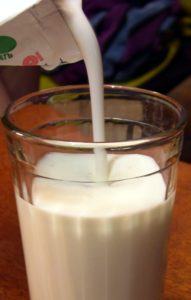 Another fermented milk drink to try is the Kefir. Kefir is known in Russia since 1884 and it originated in the North Caucasus Mountains. This milk drink is made of kefir grains and milk from cow, goat, or sheep. The yeast or good bacteria was made throughout the fermentation process.
Another fermented milk drink to try is the Kefir. Kefir is known in Russia since 1884 and it originated in the North Caucasus Mountains. This milk drink is made of kefir grains and milk from cow, goat, or sheep. The yeast or good bacteria was made throughout the fermentation process.
Kefir can also be prepared inside your home. To do this, you just need kefir grains, milk from animals, jars, and utensils.First, pour the kefir grains to the jar. Next, pour the milk and cover the jar. Lastly, culture the mixture and keep it in a warm place with a temperature of 68 degrees Celsius or 85 degrees Fahrenheit.
Kefir contains vitamins and minerals which our body needs. It has a pH level of 4.2 to 4.6 and it is mostly made of water. In addition, kefir contains iron, calcium, phosphorus, potassium, magnesium, copper, sodium, manganese, zinc, and molybdenum. It also contains vitamins such as Vitamins A, B1, B2, B3, B6, B9, B12, C, D, and E.
Kombucha
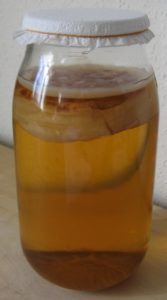 Apart from dairy products, probiotics are also available in tea such as the Kombucha or Tea/ Manchurian mushroom. Kombucha is made from fermenting sweetened green or black tea drinks. It uses yeast and bacteria or SCOBY (symbiotic culture of bacteria and yeast) such as the Saccharomyces and Gluconacetobacter Xylinus throughout the fermentation process.
Apart from dairy products, probiotics are also available in tea such as the Kombucha or Tea/ Manchurian mushroom. Kombucha is made from fermenting sweetened green or black tea drinks. It uses yeast and bacteria or SCOBY (symbiotic culture of bacteria and yeast) such as the Saccharomyces and Gluconacetobacter Xylinus throughout the fermentation process.
Kombucha is said to originate in Manchuria, Northeast Asia (China, Taiwan, Japan, and Myanmar) in 220 BCE and was used traditionally in Russia and other parts of Europe. Nowadays, Kombucha has been sold and introduced to other parts of the world.
Kombucha contains phytochemicals that have antioxidant properties, according to Health.com. In addition, it has 0.5% ethanol, Vitamin B, Vitamin C, caffeine, and acids such as acetic acid, lactic acid, and gluconic acid, according to Precision Nutrition.
Miso soup
 Probiotics can also be found in soup such as the Miso soup. The miso soup is a traditional Japanese soup which is now popular in many parts of the world. This soup consists of dashi and softened miso paste. 75% of Japanese include miso soup in their everyday meals.
Probiotics can also be found in soup such as the Miso soup. The miso soup is a traditional Japanese soup which is now popular in many parts of the world. This soup consists of dashi and softened miso paste. 75% of Japanese include miso soup in their everyday meals.
Meanwhile, the miso paste of Japan is traditionally made by fermenting soybeans, salt, and a fungus called the Aspergillus oryzae or koji-kin. Today, there are now many variations of miso paste.
If the miso paste has been fermented for a long time, like the red miso; it will give the soup a strong flavor. On the other hand, if it was fermented for a short time only, then the soup is light and sweet.
Preparation of Miso soup
One can prepare miso soup in various ways, depending on the style of the chef. In Japan, they usually use vegetables like mushrooms, carrots, and potatoes simmered with meat (tofu or fish) and the Dashi. Some would suspend the dashi to prevent overcooking the bacteria on it and they mix it when the food is ready.
In Japan, the white rice and the miso soup is the traditional meal for breakfast. This meal is the favorite of both the commoners as well as the royalties in Japan. People eat it in lacquer bowls with chopsticks.
One serving of miso soup with tofu and onion has 93 calories, 4.3 grams of fat, 2.3 grams of sugar, 805 mg of sodium, 1.4 grams of fiber, and 7.9 grams of protein.
Natto
 Another traditional Japanese food that is rich in probiotics is the Natto. It is made of fermented Natto soybeans and people usually eat it at breakfast with soy sauce, mustard, and onion.
Another traditional Japanese food that is rich in probiotics is the Natto. It is made of fermented Natto soybeans and people usually eat it at breakfast with soy sauce, mustard, and onion.
Historians believe that Natto was created between 1086 AD to 1088 AD. It is popular in the eastern region of Japan which are Kanto, Hokkaido, and Tohoku.
Natto is 55% water, 11% fats, 18% protein, 5% fiber, and 5% sugar. 1oo grams of Natto includes 29% of Vitamin K, 76% manganese, 22% Vitamin C, 48% iron, and 22% dietary fiber.
This fermented soybean has a unique smell. It smells like old cheese, according to Japan Guy. It also has a slippery and slimy texture, that’s why many foreigners don’t like eating Natto.
Natto includes probiotics like Bacillus subtilis var, Bacillus uniflagellatus, Bacillus globigii, and Bacillus natto which is good for the body, according to Dr. Axe.
Tempeh
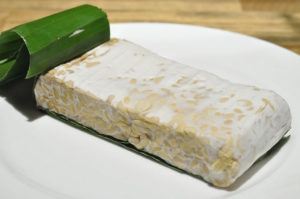 Tempeh is one of the most popular fermented soy product in Indonesia which has been consumed since hundreds of years ago. The soybeans are fermented to a cake form and it has a firm and earthy flavor. It is a great source of protein, fiber, and vitamins.
Tempeh is one of the most popular fermented soy product in Indonesia which has been consumed since hundreds of years ago. The soybeans are fermented to a cake form and it has a firm and earthy flavor. It is a great source of protein, fiber, and vitamins.
Tempeh has also been popular worldwide because it is a good substitute for meat, especially on vegetarian foods. One can add Tempeh on soup and any foods. You just need to chop it finely and simmer it with your meal.
100 grams of tempeh includes 7.64 grams of carbohydrates, 10.80 grams of fat, and 20.29 grams of protein. Tempeh also includes vitamins and minerals such as Vitamin B1, B2, B6, B12, B9, calcium, iron, magnesium, potassium, phosphorus, zinc, and sodium.
Sourdough bread
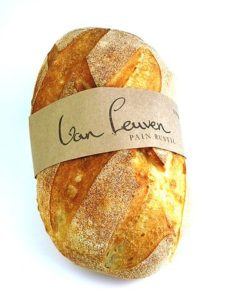
Apart from tea, soy beans, and dairy products; probiotics are available in bread and one of which is the Sourdough bread. The dough of this bread is fermented using yeast and lactobacilli. It has a mild sour taste unlike other bread available in the market.
Historians believe that sourdough bread started in 3700 BCE in Switzerland. Today, the Sourdough bread is popular in some parts of the world.
The most common yeasts species in Sourdough bread are Candida humilis, Kazachstania exigua (Saccharomyces exiguous), Candida milleri, and Saccharomyces cerevisiae. This type of bread does not also include gluten thus many vegetarians would prefer to have Sourdough in their meals.
Dark Chocolate
 Lastly, dark chocolate has probiotics too. Researchers even suggest that one must eat 1 to two ounces of dark chocolate every day due to its health benefits.
Lastly, dark chocolate has probiotics too. Researchers even suggest that one must eat 1 to two ounces of dark chocolate every day due to its health benefits.
Dark chocolates consist of 70% cacao which is high in antioxidants. It promotes healthier gut due to the microbes present in cacao. With this, regular consumption of dark chocolates can give multiple health benefits such as improving gut flora, fight fatigue, and lowers risk of heart disease, according to Gut Health Project.
Consuming dark chocolates can provide you with many minerals such as magnesium, copper, manganese, and 3 milligrams of iron. In addition, provides polyphenols.It can prevent damage in the body caused by harmful free radicals and oxidative stress, according to LiveStrong.
Conclusion
In sum, there are many foods that are rich in probiotics. We don’t need to spend too much money in buying supplements to consume probiotics, rather we can have these foods in our kitchen.
The list above are some of the probiotics and there are much more in the market. Usually, these products are fermented to allow the growth of the good bacteria. In addition, dairy products play a predominant role in probiotics.
